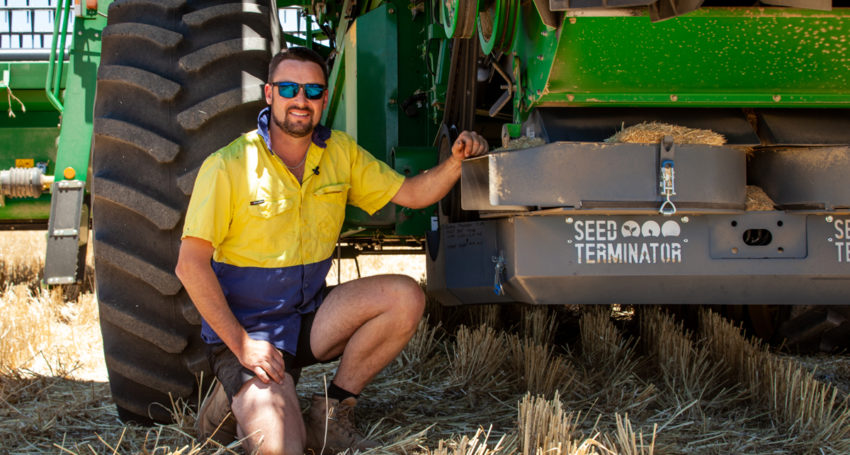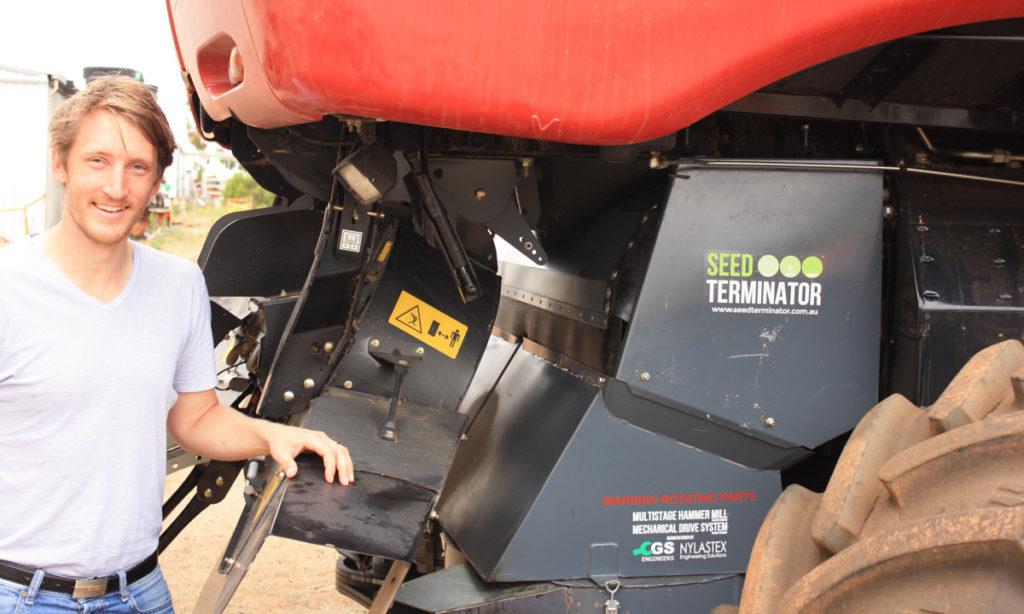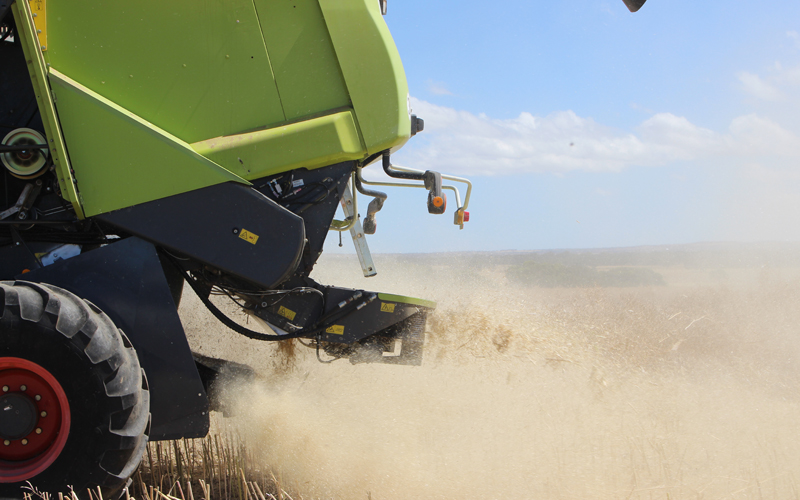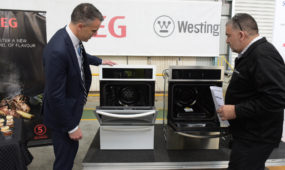Weed killing machine moves towards manufacturing milestone
Manufacturing
An emerging South Australian company has developed a modular manufacturing system to ramp up commercial production of its flagship product.

Sign up to receive notifications about new stories in this category.
Thank you for subscribing to story notifications.

The Seed Terminator can be retrofitted to new and used headers and pulverises unwanted weed seeds as crops are harvested.
The machine uses a multi-stage hammer mill to pulverise weed seeds, spreading the sawdust-like debris behind the header. Tests by the University of Adelaide’s Weed Science Research Group have shown a 96 to 100 per cent kill of rye grass seeds using the machine.
Invented in South Australia, it is the fourth year of production for the Seed Terminator following the release of nine pilot units in 2016, a further 23 in 2017 and 50 last year, which have resulted in 121 full field trials on a range of crop types in major grain growing regions in Western Australia, South Australia, New South Wales and Victoria.
Seed Terminator has at least doubled its production every year, beginning with nine units in 2016 and is now working with four manufacturers in South Australia and one in Western Australia to establish a modular manufacturing platform to enable continued growth. The company is also working with two other Adelaide companies on electronics and advanced manufacturing aspects of the process.
Inventor and Kangaroo Island farmer Dr Nick Berry, pictured below, founded the company with his uncle Mark Ashenden.

Dr Nick Berry with the Seed Terminator attached to a CASE IH header.
Seed Terminator is based at Flinders University’s New Venture Institute in the Tonsley Innovation Precinct in Adelaide’s southern suburbs alongside several advanced manufacturing success stories such as SAGE Automation, Micro-X and Siemens.
Ashenden said the product, which has undergone design improvements after every season, was now ready for full commercial production.
He said it was the only mechanically driven unit of its kind and had proven to be effective in Australian and North American conditions.
The company will produce 100 of its machines ahead of this year’s Australian grain harvest, which begins in October. Up to 10 machines will also head to North America next month for their harvest, which begins in July or August.
“We think this year is our first true commercial release after three years of trials with a growing number of partners,” Ashenden said.
“We’re designing a manufacturing plan around making 100 units this year and of that about 10 will be for export, 10 purely for research purposes and 80 for domestic sales in Australia.
“We’ve also now engaged multiple dealers of all different brands across Australia and the information they are feeding back to us is brilliant.”
The Seed Terminator can be fitted to new and used John Deere, CASE IH, Massey Ferguson, Claas and New Holland Class 7, 8, 9 and 10 harvesters and retails for about A$115,000.
The “one-pass solution” spreads the nutrient-rich pulverised weed seed debris 10 to 12 metres behind the harvester to act as fine mulch for soil improvement.

It also reduces the need for herbicides and labour intensive burn-offs to keep weeds at bay after harvest. Testing has been focused on rye grass seeds because of their miniscule size and the fact they are notoriously difficult to kill.
“We want to make a portion for stock this year and then we can work at reducing the time from order to completion to get it down to four to six weeks and that’s going to be a massive step forward for us,” Ashenden said.
“We’re building a modular manufacturing system where each module is capable of doing between 25 and 50 units a year and we’ve got four of them in Adelaide and one in Western Australia.
“Last year was about developing the capability of making 100 but stopping at 50. This year it’s about proving we can make 100 and working out with those modular systems how quickly we can deliver.”
The Grains Research and Development Corporation (GRDC) estimated in 2016 that weeds cost Australian grain growers about $3.3 billion annually, with yield losses of 2.76 million tonnes. The GRDC also estimated herbicide resistance costs farmers $187 million a year for herbicide treatment and other weed management practices.
Western Australia is the largest physical market in Australia and Ashenden said WA farmers had also shown to be early adopters in weed seed management, trialling 65 of the 81 Seed Terminator units currently in the field.

A Seed Terminator unit in action on a CLAAS header.
“Australia produces about 4 to 5 per cent of the world’s grain and we think there’s a possibility of about a 10 per cent market share in Australia so that’s about 300 machines a year,” he said.
“The potential export market is multiple times more.”
“North America is a much bigger market so it has the potential to grow a lot faster than it has here in Australia and the beauty of it is there is probably as much demand in Canada as there is in the whole of Australia yet it is condensed into about a third of the geography.”
Jump to next article



